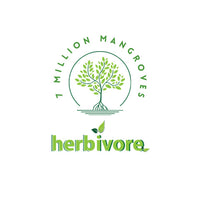Why your Indoor Plants will love Achook Neem Oil !!!
It is hard to consider a downside to opening your home to indoor plants, but with all light comes a little darkness, and that is in the presence of pests and disease. While the initial panic that sets in upon finding something eating or killing your plant can feel overwhelming, you may find comfort in knowing there is a quick fix that can solve a countless number of these issues: Neem Oil. This solution is an oil-based fluid that is derived from the seed kernels of the subtropical Neem Tree (Mwarobaini), hence the name “Neem Oil.” As time passes in a home, indoor plants can be subjected to the less-than-favorable aging and wear that all outdoor plants are used to, as well. Disease from adverse conditions or absence of nutrients, infestation from pests like Spider Bites and Mealy Bugs, and poor photosynthesis from dust build up are all potential situations that can be corrected with the proper usage of the reliable, science-backed Neem Oil. Plus, the use of an organic substance, especially in the home, ensures that the air we, our families, and our plants breathe is free of chemicals and cares for the environment when it is made. From our research and personal use, his is how to use Neem Oil to care for your indoor plants. What is Neem Oil and how does it work? As we mentioned before, Neem Oil is an organic oil that is extracted from the heating and pressing of the seeds from the Mwarobaini Tree; the resulting solution has a yellow/brown color and garlic-like (though some say sulfuric) smell and is packed with azadirachtin, nimbin, and other limonoids that help control creatures and parasites that like to attack Pothos and other indoor plants. Neem Oil is successful at repelling pests, interfering in bug reproduction, protecting beneficial soil critters, and being biodegradable because of all the components naturally found in its chemical make-up. Neem Oil, as a soil additive and foliage spray, is extremely helpful to plants, but its worth noting that most options on the market today are also non-toxic to both people and pets, when used correctly. Directly breathing in or ingesting this oil is not recommended, but any residual amount found on produce or leaves licked by curious cats is still fairly safe and not a cause for immediate concern. Reports have come out stating that children and the elderly are more prone to Neem Oil poisoning however, so make sure to care for your plants with this solution only in a well-ventilated area apart from anyone, if possible. The Achook Neem Oil we sell at Herbivore Garden Centre is manufactured by Organix Limited and is the highest recommended Neem-derived oil we provide. It contains all the same limonoids and boasts all of the benefits here, as well as helps to control parasitic Root Knot Nematodes in house plants.

When should you use Neem Oil? The common signs for plant disease and potential pest infestation are what you should look for as a reason to use Neem Oil. If you find any odd spots of discoloration on leaves or stems, always first check to see if the situation is solvable without the use of any pesticides, organic or otherwise (for example, light root rot can be repaired with the simple removal of the poor roots and repotting in drier soil). If your situation turns out to be more complicated, consider adding Neem Oil to the soil mix of your plant to replenish helpful nutrients and act as a combination fungicide and bactericide. Red flags on or around your plant are also great indicators that Neem Oil should be used, the sooner the better. Bites on the leaves, webbing around the leaves or stems, and gnats on or near the plant in question are all signals of a bug invasion, something that would cause even an experienced plant parent to shudder. Pests and parasites live with the sole purpose of eating and destroying your house plants, one by one; they can jump from plant to plant if they are close enough to them and can run rampant if not stopped with Neem Oil or another pesticide. How are you supposed to use Neem Oil with your plants? In recent years, three different ways to use Neem Oil have been popularized in the plant community: as a wipe, as a spray, and as a soil drench, each with their own purposes and goals. Neem Oil as a wipe is mostly used as a preventative measure; this is created by wetting a cloth with a water and oil mixture (1-2 ml of oil per liter of water) then using that cloth to dust and wipe the leaves of plants. This method works best on things with thicker leaves like Sansevieria and Peperomia, though other plants can still reap the same benefits through a spray of the same solution directly onto the foliage. Soil drenches using Neem Oil are reserved for the reactive situations where you find that your soil or overall plant is already under attack by an infestation.

A blend of Neem Oil, soap, and warm water is used to flush the soil of a plant, depositing nutrients while harming the bugs left behind. Regardless of how well the oil repels and removes the existing bugs, Neem Oil will never harm the plant or its fruits or flowers, leaving it stronger and healthier than before. All in all, no matter your reason for choosing Neem Oil to help you care for your house plants, you are making one of the best decisions for the long-term health of your plant babies that can be made. Both the insecticide and preventative advantages of this oil have endless hidden benefits that make using an organic alternative easy and accessible to everyone.
RESOURCES
http://npic.orst.edu/factsheets/neemgen.html
https://www.ncbi.nlm.nih.gov/pmc/articles/PMC3841499/
Article Written By Suraj Shah © 2021 Herbivore Garden Centre
